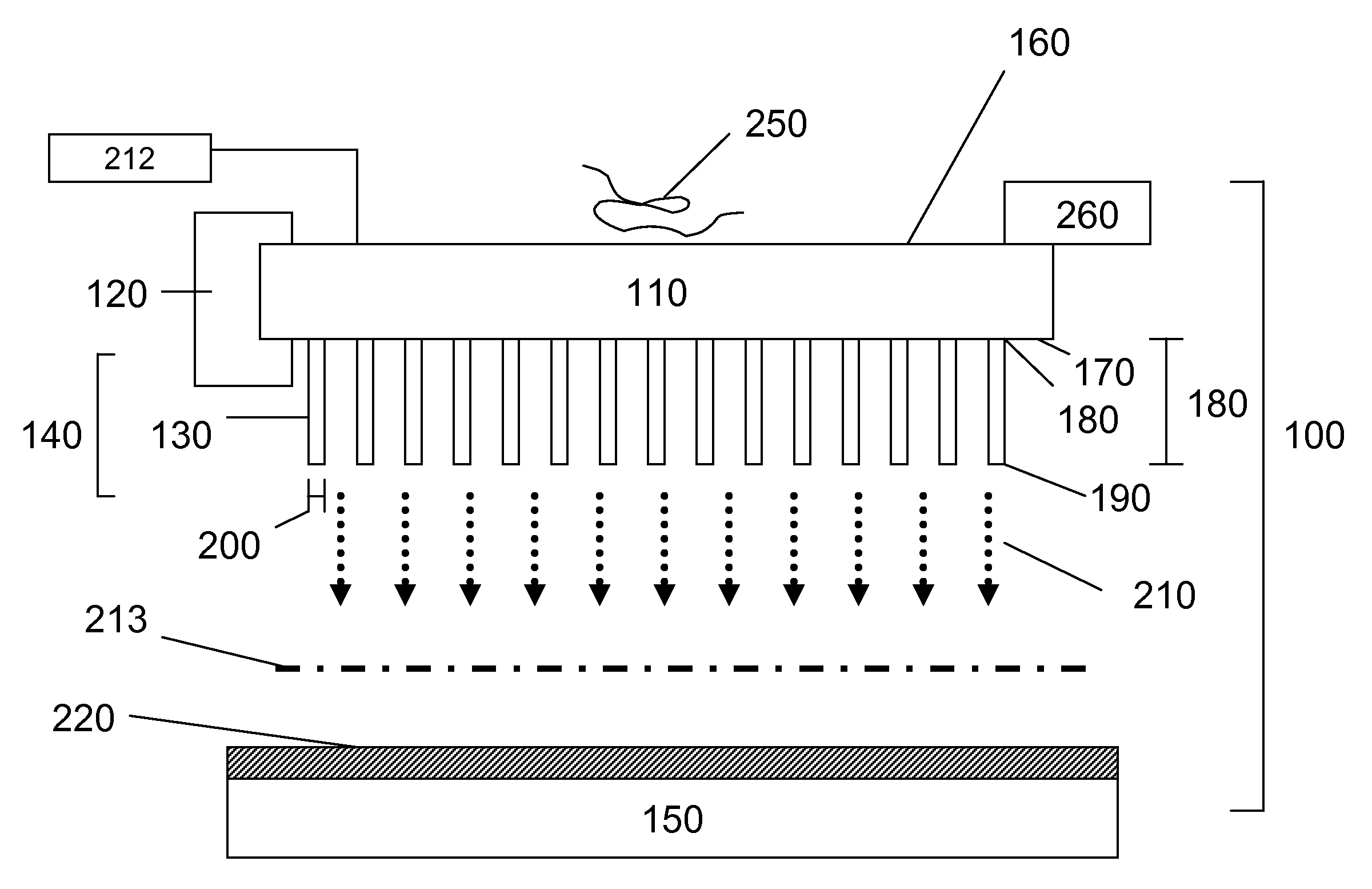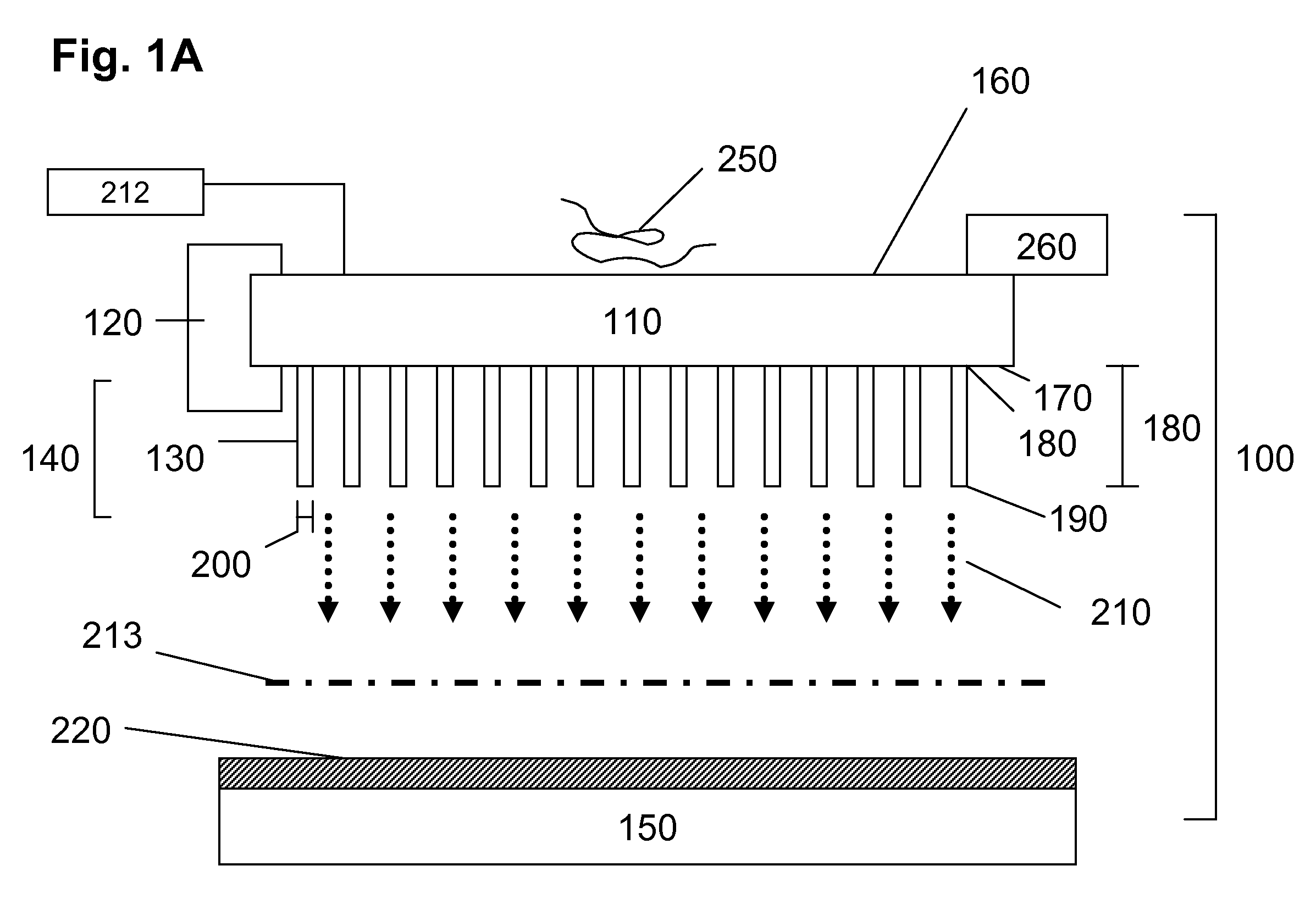Nanoelectromechanical and Microelectromechanical Sensors and Analyzers
- Summary
- Abstract
- Description
- Claims
- Application Information
AI Technical Summary
Benefits of technology
Problems solved by technology
Method used
Image
Examples
example 1
Computational Study of Membrane and Pillar Resonator Mechanical Mode Structure, Resonance Frequency and Response to Mass Loading
[0117] The ability of sensors of the present invention to provide sensitive detection and mass analysis of molecules having large molecular masses was verified by computational studies. Specifically, the mechanical modes and resonance frequencies of exemplary pillar resonators and membranes were calculated and evaluated with respect to the utility of different sensor geometries and physical dimensions for sensing and detection applications. Predicted changes in resonance frequency caused by interaction between analytes in the receiving surface for exemplary membrane-pillar resonator configurations were calculated and membrane vibrational frequencies necessary to drive selected pillar resonator mechanical modes at selected resonance frequencies were determined. Furthermore, pillar resonator and membrane dimensions and shapes providing sensors exhibiting enh...
example 2
Sensors for Mass Spectrometry Analysis
[0131] The present invention provides sensors and analyzers for mass spectrometry that are compatible with a variety of ionization sources, including but not limited, electrospray ionization, MALDI and nebulization ion sources, and compatible with a variety of mass analysis schemes including, but not limited to, TOF, quadrupole, magnetic sector and ion trap mass analyzers. The present sensors and detectors provide a detection sensitivity that increases with increasing mass, in contrast to conventional MCP detectors, and provide measurements with good temporal resolution. Accordingly, devices of the present invention are ideally suited for detection applications in TOF mass analysis systems.
[0132] To provide a detector for a TOF mass analyzer, a sensor of the present invention is positioned at the outlet of the TOF flight tube such that ions exiting the flight tube collide with the receiving surface of the sensor. This configuration allows anal...
example 3
Evaluation of Field Emission from Nanopillar Arrays
[0142] To evaluate the usefulness of nanoelectromechanical structures and devices of the present invention for sensing applications, field emission from membrane-supported nanopillar arrays was detected and analyzed using a variety of detection and imaging configurations.
[0143]FIGS. 20A and 20B provide plots of current (nA) verse voltage (V) for an array of boron doped silicon nanopillars supported by a membrane. The nanopillars have gold field emitting tips that extend lengths about 40 nanometers and are positioned distal to the supporting membrane. Diameters and lengths of elements of the array are about 100 nanometer and 500 nanometers, respectively. Electrical biasing is achieved using a grid electrode having a selectively adjustable voltage positioned proximate to the nanopillar array. The voltage plotted in FIGS. 20A and 20B corresponds to the potential difference between the grid electrode and the membrane supporting the na...
PUM
 Login to View More
Login to View More Abstract
Description
Claims
Application Information
 Login to View More
Login to View More - R&D
- Intellectual Property
- Life Sciences
- Materials
- Tech Scout
- Unparalleled Data Quality
- Higher Quality Content
- 60% Fewer Hallucinations
Browse by: Latest US Patents, China's latest patents, Technical Efficacy Thesaurus, Application Domain, Technology Topic, Popular Technical Reports.
© 2025 PatSnap. All rights reserved.Legal|Privacy policy|Modern Slavery Act Transparency Statement|Sitemap|About US| Contact US: help@patsnap.com



